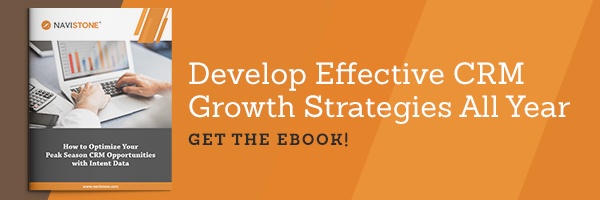As we review 2017, we find the year of electric semi-trucks, Artificial Intelligence, the “Me Too” movement and an unforgettable solar eclipse. We can say with certainty the year did not disappoint with its innovation, change and action. As we move into 2018, from the lens of a direct marketer, there are a couple of major themes that will play a big role in shaping the year in marketing.
Identity Graphs and Matching will Continue to Grow
Last year we predicted that 2017 would move marketers beyond talking about “cross-device” marketing because it will just be marketing. The conversation has indeed shifted away from just channels and devices to focusing on the consumer. While cross-device is still a key element in reaching and understanding consumers, the notion of tracking people across devices has evolved into a bigger view of the consumer journey, with the Identity Graph and identity matching playing a large role. This should be considered a big theme to continue tracking in 2018.
While identity matching has been around for several years, the pipes are now in place and the data is becoming more accurate, and identity matching should be considered core infrastructure to every marketer’s strategy.
Identity Matching: The Direct Marketing Evolution
For direct marketers, we’ve seen identity matching evolve over the course of many decades, starting in the 1980’s when merge/purge consolidation of postal addresses was introduced and shortly thereafter when email came along. Email…imagine a communication channel that directly touches consumers with the use of the @ sign and the click of a “send” button. The launch of email opened up a whole new universe of opportunity to identify and reach consumers with the ability to match postal addresses to email addresses…and vice versa with reverse append technology.
Over the next decade the Internet exploded, growing from 36 million users worldwide in 1996 to 361 million by 2000. This growth was seen as a gold rush for advertisers to reach their consumers. But the marketer’s challenge now was “how can I identify who my customer is online?”. Thanks to engineer Lou Montulli, marketers could now rely on the "cookie" to help identify their prospects and customers online. According to Digital Trends, “Cookies are small text files that reside on your computer, and the information they contain is set and accessed by the servers of the websites that you visit.” Cookies enable servers to identify web browsers and what they’re viewing online.
The data science and matching technologies were getting smarter, and so were direct marketers. Cookies brought identity matching to a whole new level of sophistication, allowing advertisers to reach consumers in a relevant way. Soon, postal addresses could be matched to cookies for an even better understanding of the consumer. And now, in 2018, advertisers can identify and reach prospects and existing customers from cookie to postal address. With the right data interpretation and consumer privacy guidelines, this match brings intent data to life, and direct marketers can reach out with an individualized approach to their content and offer – providing the consumer the best experience possible in their journey to making a purchase, while still protecting the anonymity of website visitors.
 |
There is an impressive and ever-growing identity ecosystem that exists today for all marketers to access, identifying your customers and prospects and reaching them via mobile, desktop or direct mail. The notion of Identity Graphing and matching goes beyond the device or channel and will remain a heavy focus of growth in 2018. We look forward to seeing what the year brings here.
The Customer Journey: A Voyage of Personalization and Privacy
The customer journey will continue to be a big theme for marketers in 2018. With the many touchpoints where a consumer can interact with a business, there should remain an emphasis on the consumer journey and continuing to make it more relevant.
The evolution of identity matching plays a huge part in fueling the information provided to marketers to create a better experience for their customers during their path to purchase. With all the options available to customers today, whether that be viewing an ad by display, email, mobile or in the postal mailbox, the marketer’s job is more difficult than ever in being able to “wow” the customer every step of the way….and customers are beginning to expect that.
Offering customers an individualized experience has played an increasingly important role in success for marketers. Yet, it is one of the most difficult challenges the marketer faces. Adobe states that 60 percent of marketers struggle to personalize content in real time, yet 77 percent believe real-time personalization is crucial.
But what does it take to solve this challenge? Data. Great data. And, as said before, with great data comes great responsibility. Providing consumers the personalized experience they have come to expect means we, as marketers, walk a fine line on our commitment to protecting their privacy. Privacy has been ever-present in the evolution of identity matching outlined above. However, it has most recently come under a spotlight as the conversation over the pond on GDPR compliance has come to bear, along with increased scrutiny on data privacy here in the U.S.
This should not be a conversation that intimidates marketers. We owe it to our customers to keep privacy at the cornerstone of the way we market. As reported by Shopify, global retail e-commerce sales will reach $4.5 trillion by 2021. This growth in online transactions creates a huge environment for the exchange of data, so privacy is an understandable concern for consumers.
However, an important differentiation to make is that consumers are likely less concerned about the invasion of privacy, but rather that eerie feeling that may come from receiving an ad after having clicked on a website or researched a product online. As with addressing most fears, the answers to solving this “creepy” factor can be found in education. The topic of privacy and security of data should be at the vanguard by marketers and partners, with true transparency, so consumers are fully aware of how they are being marketed to in a privacy compliant way.
For example, consumers should know of the differences between data types, such as behavioral data and identity data and also understand the great lengths that are taken to protect consumer data and preserve anonymity through every step of the process.
Direct marketing has a long history of allowing advertisers to rent lists of anonymous data for more relevant marketing campaigns. There is not, and never should be, a point in the process where the consumer identity is exposed to marketers. Individual consumer identity is always kept anonymous and fiercely protected. Marketers decide which lists to mail based on attributes like age, past purchase-history, location and intent behavior. For a long time now, the direct marketing industry has been using consumer data to select direct mail prospects, without ever actually knowing who the consumer is. This should be our ongoing commitment to protecting the process of more informed and relevant marketing.
Consumer choice is another key element to educating consumers on privacy. Consumers who do not wish to receive direct mailings can opt out by putting their name on the “do not mail” list maintained by the Direct Marketing Association.
The consumer journey is becoming more and more dynamic and impressive and so is the technology which keeps data secure. This growing ecosystem of e-commerce will continue to demand more transparency on the marketer’s part and more trust from the consumer, which will be a big theme for 2018.


Lookalike Audiences Enhance customer acquisition by identifying high-potential prospects, boosting response rates, and lowering advertising costs.
Retargeting Postcards Double the performance of your direct mail retargeting.
Amplify Recognize unknown visitors who are actually customers. Add 20-40% to your ESP/CRM campaigns.
IQ Mail Retain customers with personalized, timely messages for those opting out of digital channels.









Comments